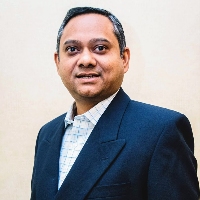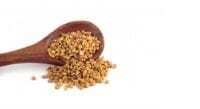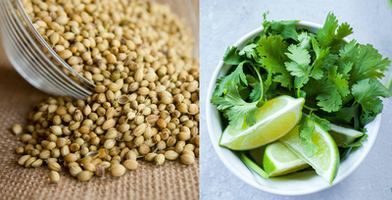
What to expect from an Ayurveda Practitioner visit?
Introduction to Ayurveda
The word Ayurveda (science of life) is derived from two words in Sanskrit – “ayuh” meaning “life” & “veda” meaning “science.” The basic principles of Ayurveda are based on the fact that the cosmos and all individuals are made up of energies of the five great elements – Space, Air, Fire, Water and Earth. There is constant interplay between a state of balance (health) and a state of imbalance (disease). The body, mind, and consciousness are believed to work together in maintaining this balance or homeostasis.
There are four aims of Ayurveda are:
- Maintenance of health
- Prevention of diseases
- Achieving longevity
- Treatment of diseases.
What to expect from the appointment?
An Ayurveda Practitioner will ask a lot of questions related to your body, mind and spirit to understand your state of balance or imbalance. The approach is holistic in nature looking into environment, behavior, body and mind. The Practitioner or Vaidya as he or she might be called will take extensive personal and medical history for good flow of information. Be prepared to answer questions related to following:
- Diet, food, nourishment, and desire for or appreciation of food
- Strength, vigor, and vitality.
- Senses – speech, sight, hearing, taste, smell, touch
- Mind and Mental Health.
- Skin and complexion.
- Digestion of food.
- Sleep patterns and how you feel post waking up.
- Passing of urine and feces, sweating.
- Desire for sex.
- Profession or working conditions.
- Lifestyle including exercise, relationships.
Meeting your Practitioner
After the initial welcome, names, introductions etc the Ayurveda Practitioner will ask about the following:
- Chief Complaint to set the agenda for the consultation.
- List of all issues at a high level.
- Other complaints or symptoms.
- Specific requests (i.e. medications, allergies, lifestyle or diet limitations).
- Client’s expectations for this visit.
- Expect to be asked “Why now?”
- Detailed Medical History including medications you are taking, past treatments etc.
- Other History – Family/Social History, Occupational History and Sexual History.
A thorough intake process helps the practitioner identify key symptoms and potential causes of imbalance in order to determine the most suitable treatment options. It is said that a Practitioner who first examines the patient and then start the treatment becomes successful. And for treating any disease, proper diagnosis must be made first before correct treatment can be given. The successful achievement of this, three most important tools described by Ayurveda are:
- Finding the cause of the disease,
- Understanding the signs and symptoms of disease and making correct diagnosis,
- Proper treatment without side effects.
Ayurvedic history and examination
This phase of the consultation involves the following:
- Sparshanam (Touch based): Analysis of pulse rate and body temperature. Nadi Pariksha or “Pulse diagnosis” is done by an Ayurveda/Siddha doctor by checking your pulse on your wrist to detect any imbalance in “TriDosha” in your body.
- Prashnam (Question based): Analysis based on a questionnaire, consisting of questions related to background of the disease and lifestyle of the person, patterns related to sleep, dreams, appetite, energy levels, kind of voice, etc.
- Darshanam (Visual based): Analysis of physiological features like body frame, weight, height, skin and hair, eyes, and teeth.
The Vaidya’s are trained to observe, record, tabulate, and communicate using the five senses. The Practitioner will see, hear, feel, smell, and are experts based on practice. In fact, Ayurveda teaches very precise methods for understanding the disease process before any overt signs of the disease are manifested. By determining the early symptoms of imbalance and disease, an Ayurvedic practitioner can determine the nature of future bodily reactions.
Some of the questions or signs they will look for are:
- Immunity – frequent cough cold, allergies.
- Energy levels, tiredness.
- Lethargy after eating and foods you cannot handle or digest.
- Digestion, bloating, constipation, diarrhea, stomach upset or heart burns.
- Vision, Hearing.
- Mind/Memory – forgetting things, repeating things.
- Stress, Mood Swings.
- Pain (Ex: Muscles, Joints) – Joint pain when you go on long drives.
- Headache or Sleep patterns or issues.
- Coating in the tongue.
- Foul odor – breath, body, gas.
- Skin rashes, drying up, scales, eczema.
The aim of clinical diagnosis is to find the relation between the symptoms and respective aggravated doshas how they corelate to affected organs, tissues, channels etc. Once this picture becomes clear, it is very easy to finalize personalized recommendations.
Ayurveda based Prescription, Therapy or Treatments
An Ayurvedic Practitioner addresses all aspects treatment including diet, lifestyle, herbs, drugs, surgery, bodywork, and special detox procedures like panchakarma. They bring in rituals, mantra, Yoga, Pranayama, and meditation for healing the mind. In addition, the rejuvenation of the mind, body and spirit are worked on using life-style recommendations for health promotion, wellness, longevity, and disease prevention.
- Ayurvedic Herbs & Herbal preparations
- Ayurvedic Herbs are medical supplements that enhance the client’s physiology. They are taken in conjunction with whatever prescriptions that the physician prescribes. Ayurvedic Herbs includes individual herbs or compounded herbs in powder form, tablets, liquids, and paste. They can be externally applied and/or taken internally for the prescribed period, just like any other doctor prescribed medication.
- Panchakarma
- ‘Panchakarma’ refers to five treatments modalities used to eliminate the toxins (doshas) from the body and clear the channels. These are the procedures that help eliminate toxins from the body. It is usually a residential or closely monitored holistic treatment program that supports treatments or therapies for chronic conditions that alleviating symptoms from those diseases. These detoxification therapies help restore your health to its natural state and include herbal formulations along with specific diet and lifestyle adjustments.
- Diet, Nutrition & Lifestyle advice
- For best results, Ayurveda encourages you to follow the required dietary and lifestyle advice. This will help maintain balanced Doshas and prevent buildup of toxins in the body. Any specific dietary changes that may be required will be advised by the Practitioner, post panchakarma.
- Daily (Dinacharya) and seasonal routines (Rituchariya) are recommended in most cases including incorporating various types of exercises.
- Vedic exercises like Yoga, Pranayama and Meditation
- Yoga practices of Yoga through Asanas, Pranayama or breath modulation, and meditation or mindfulness are part of healing modalities that the Practitioners might talk about
- Allied Therapies
- Sleep Therapy (Nidra), Aromatherapy with essential oils, Sound Therapy with different types of music or sounds, Color Therapy, Touch Therapy including Chakra balancing or Mudras, are at times recommended for balancing Doshas
Conclusion
According to the Ayurvedic Texts, there several expectations from the Practitioner, Medicines and the Patient. Those are:
- Ayurveda Practitioner
- Learned.
- Experienced.
- Attentive & Hands-on.
- Compassionate.
- Medicines, Herbs or Supplements
- Readily available.
- Full of medicinal properties.
- Un-polluted and non-toxic.
- Should be of the right type.
- Client or Patient
- Alert/attentive during all phases of consultation or treatment.
- Tell symptoms as they are and give complete information.
- Afford and take treatments as prescribed.
- Ability to follow instructions.
These are all in line with the recent definition of Integrative medicine that “reaffirms the importance of the relationship between practitioner and patient, focuses on the whole person, is informed by evidence, and makes use of all appropriate therapeutic and lifestyle approaches, healthcare professionals and disciplines to achieve optimal health and healing.” Ayurveda has been practicing and propagating this for the last 5000 years!
Note: The information in this article is intended for your educational use only and is not a substitute for professional medical advice, diagnosis, or treatment. Always seek the advice of your physician or other qualified health providers with any questions you may have regarding a medical condition and before undertaking any diet, supplement, fitness, or other health programs.






